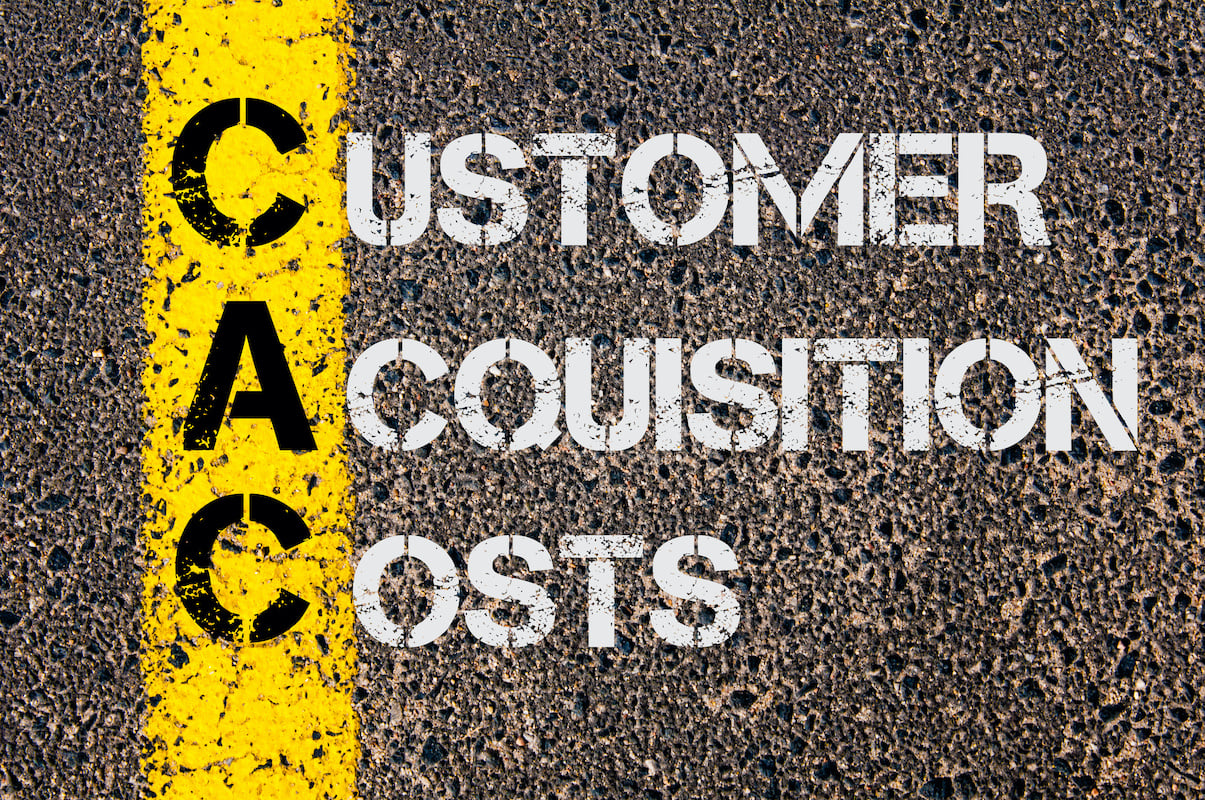Cost of Acquiring a New Client Using Inbound Marketing
In the competitive landscape of the financial services industry, gaining clients and increasing AUM is critical for financial advisors. But at the end of the day, it comes down to cost. If the cost of acquiring a new client, also known as CAC, doesn’t align with the lifetime value of that customer, it’s time to re-evaluate the methods used to acquire such clients.
The term lifetime value is essential to note from the previous statement. As with most investments, the value of a new client isn’t always realized in the beginning. Even if the investment assets of that new client exceed the average CAC for a financial advisory firm, that doesn’t consider the cost of servicing that client.
Inbound marketing works because it’s based on how people naturally search for service providers.
The truth is that many clients become more profitable over time as the initial servicing and onboarding costs decrease and assets trend upward. And while mature client relationships are often the most profitable, those relationships take time. Because of the cyclic nature of the sales cycle and natural attrition rates, in any industry, it’s critical to keep new clients coming in to keep the business thriving.
Read on to learn more about the cost of acquiring new clients for financial advisory firms and how to manage it.
What Factors Make Up CAC?
A few figures make up the bulk of the cost for financial advisors to acquire new clients. These leads move through a client acquisition journey or funnel where they are nurtured and transition from potential to actual clients.
Of course, stages in the sales journey can vary per industry and between advisory firms since digital marketing strategy has changed the game for all. Time and effective effort can turn a prospect into a paying client. The more financial advisors understand the client acquisition process, actions required, and costs associated, the better prepared they are to budget for CAC accordingly.
According to Hubspot, the basic CAC formula is CAC = MC / CA, where:
CAC = customer (client) acquisition cost
MC = marketing costs
CA = customers (clients) acquired
Marketing costs are an umbrella term for the items below in the simplified formula.
Advertising Costs
While advertising costs make up a majority of the CAC for a financial advisor, this is by no means the only factor when calculating the actual cost of acquiring a client. However, these costs can quickly get out of control if not budgeted and monitored.
Marketing or Sales Team Costs
CAC can include any marketing agencies or consultants hired to help with marketing efforts. If advisors are not currently paying anyone because they are DIY, their time can be a cost since they would otherwise accomplish other business tasks.
Web Design, Maintenance, and SEO Costs
These costs commonly stretch beyond the initial website build to ongoing maintenance and edits, SEO updates, domain registry fees, and licensing or monthly fees paid for the framework or CMS platform. An agency should include quarterly analytics reports to help advisors track their websites’ performance as efforts begin to drive traffic.
Ongoing Subscription Costs
Creating, publishing, and distributing branded marketing content is a full-time job. However, there are tools available that can help financial advisors save valuable time when it comes to crafting marketing materials and content. Some examples include automated email platforms, image library subscriptions, social media management/scheduling tools, and subscriptions to graphic design programs.
Can Financial Advisors Reduce Their CAC Cost?
As with most things, even if advisors think they are doing fine with their overall marketing efforts, they can probably do better. When it comes to CAC, they can potentially reduce the cost of acquiring new clients by separating their overall marketing efforts from their acquisition marketing efforts.
While they may seem one in the same, traditional marketing covers everything from general awareness of a firm to general lead generation for more targeted marketing efforts. Acquisition marketing takes it a step further and focuses on turning those ideal clients—who have already passed the awareness stage (likely engaged with marketing efforts)—into clients.
Types of Acquisition Marketing
The aspects below are part of inbound marketing for financial advisors and influential for client acquisition because they focus on engaging prospects with content and experiences. Don’t confuse this with outbound marketing, which tries to move prospects into the awareness stage. In short, if advisors already have leads coming to their website or other online assets, they need to give them a reason to take the next steps.
Read: Inbound Vs. Outbound Marketing For Financial Advisors
Here are some examples of inbound marketing for financial advisors looking to reduce their CAC.
Content Marketing
It’s no secret that content is king for any financial advisor’s marketing efforts. This is especially true when looking through the lens of acquisition marketing. Content such as videos, blog posts, infographics, whitepapers, and the like will further engage prospects by providing them enough information to form the basic knowledge of a subject or product/service while realizing they need to seek the help of a knowledgeable financial professional.
Remember, content marketing isn’t pushy or going for the hard sell. If you provide quality content, it will do the selling for you. But that does not mean underestimating the value of a well-placed and effective CTA (call to action). CTAs should be strategically placed so that if a prospect wants to reach out, they will have no trouble doing so.
Client Retention
Once someone is a client, that doesn’t mean they will necessarily remain one for the long haul. That’s why client retention should be a part of a financial advisor's client acquisition strategy. Keeping existing clients happy can prevent client turnover.
This essentially lowers the cost of acquiring new clients because current clients remain profitable for the firm.

